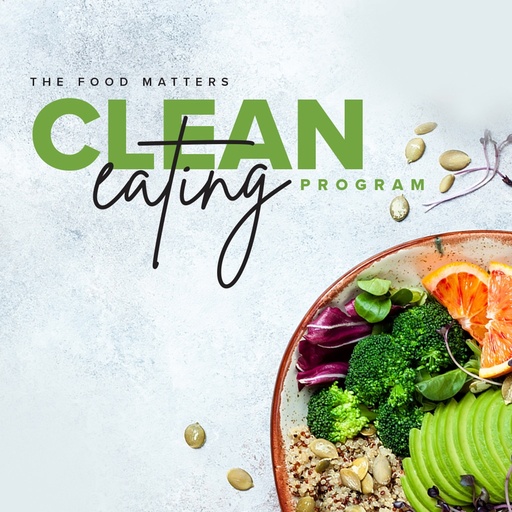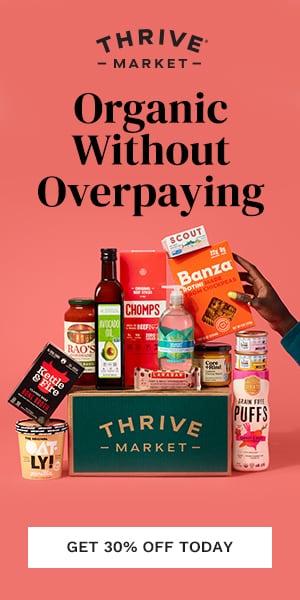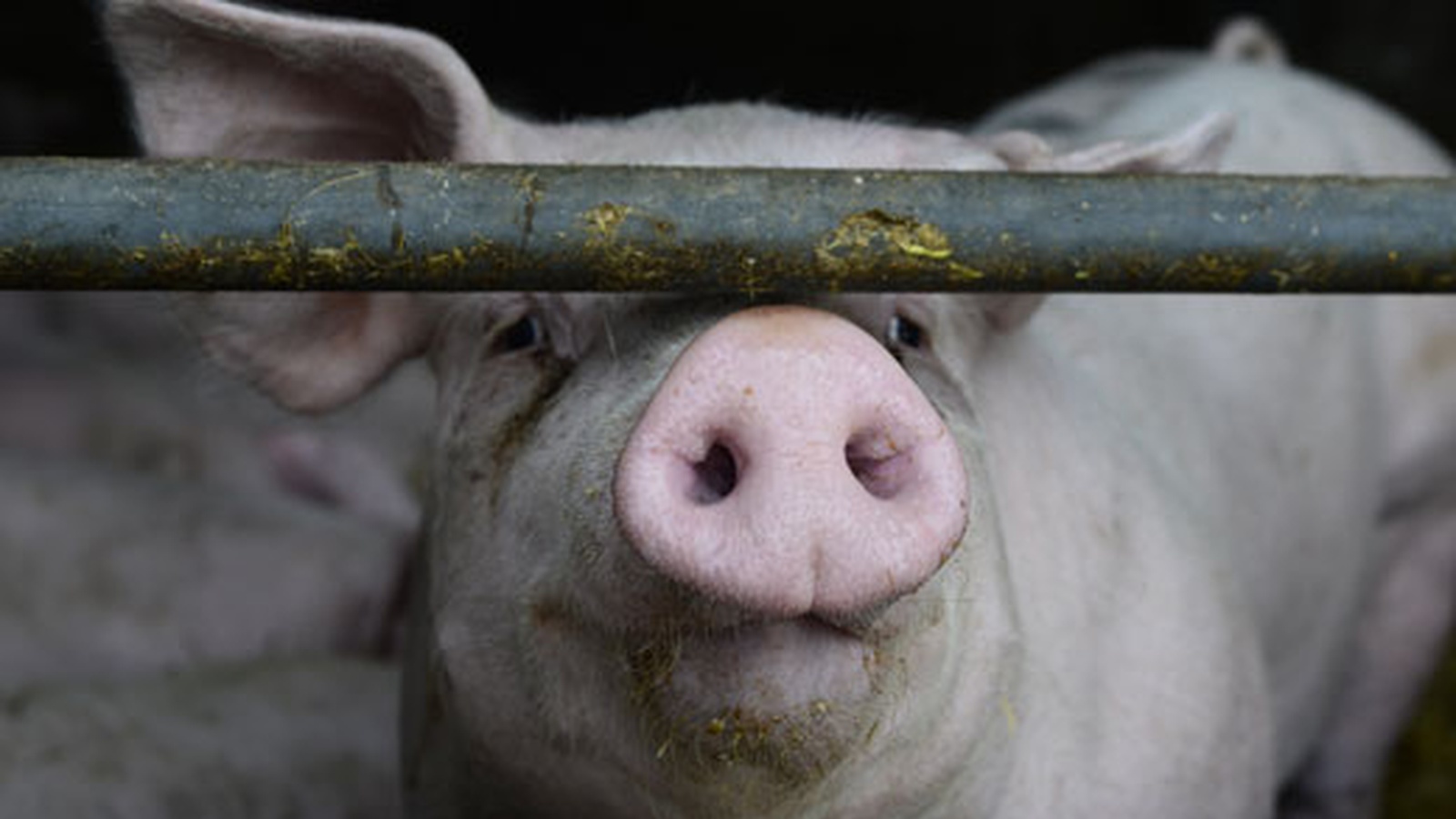What is Factory Farming?
In the last few decades, consolidation of food production has concentrated power in the hands of fewer and fewer corporations. Many of today's farms are actually large industrial facilities, not the green pastures and red barns that most Americans imagine. These consolidated operations are able to produce food in high volume but have little to no regard for the environment, animal welfare, or food safety. In order to maximize profits, factory farms often put the health of consumers and rural communities at risk.
What is a Factory Farm?
The government calls these facilities Concentrated Animal Feeding Operations (CAFOs). The Environmental Protection Agency (EPA) defines a CAFO as "new and existing operations which stable or confine and feed or maintain for a total of 45 days or more in any 12-month period more than the number of animals specified" in categories that they list out. In addition, "there's no grass or other vegetation in the confinement area during the normal growing season."
Numbers for both large and medium CAFOs (factory farms) are listed on the EPA's site. A large CAFO includes 1000 cattle, 2500 hogs over 55 pounds, or 125,000 chickens. A liquid manure system is used where the animal's urine and faeces are mixed with water and held either under the facility or outside in huge open air lagoons. These manure systems create a tremendous amount of pollution.
These industrial facilities share many characteristics, including:
Excessive Size
Unnaturally large numbers of animals are confined closely together. Cattle feedlots generally contain thousands of animals in one place, while many egg-laying businesses house one million or more chickens. The main animals for such operations are cows, pigs, chickens and turkeys, but this practice is also applied to sheep, goats, rabbits, and various types of poultry.
Disregard for Animal Welfare
- Metal buildings confine animals indoors, with minimal room for normal behaviours and little or no access to sunlight and fresh air.
- Animals are mutilated to adapt them to factory farm conditions. This includes cutting off the beaks of chickens and turkeys (de-beaking), and amputating the tails of cows and pigs (docking).
- Pens and cages restrict the natural behaviour and movement of animals. In some cases, such as veal calves and mothering pigs, the animals can’t even turn around.
Use of Pharmaceuticals
- Low doses of antibiotics are administered regularly to animals in a pre-emptive move to ward off the diseases bred by unnatural, unsanitary conditions.
- In addition to preventive medicines, animals are fed hormones and antibiotics to promote faster growth.
Waste and Run-off problems
- Excessive waste created by large concentrations of animals is handled in ways that can pollute air and water.
- Man-made lagoons on industrial farms hold millions of gallons of liquid waste, from which contaminants can leach into groundwater. The manure is normally sprayed on crops, but often excessively, leading to run off into surface waters.
- Nutrients and bacteria from waste can contaminate waterways, killing fish and shellfish and disturbing aquatic ecosystems.
The True Costs
Industrially produced food appears to be inexpensive, but the price tag doesn’t reflect the actual costs that we taxpayers bear. Factory farms pollute communities and adversely affect public health, thereby increasing medical costs for those living near such farms—costs that are often shouldered by public budgets. Taxpayers fund government subsidies, which go primarily to large industrial farms. Jobs are lost and wages driven down, as corporate consolidation bankrupts small businesses and factory farms pay unethically low wages for dangerous, undesirable work.
Because factory farms are considered “agricultural” instead of “industrial,” they are not subject to the regulation that their scale of production (and level of pollution) warrants. Because they employ powerful lobbyists that can sway the government agencies responsible for monitoring agricultural practices, industrial farms are left free to pollute, to hire undocumented workers (and pay them next to nothing), and to locate their businesses without regard to the impact that has on surrounding communities.
Does Industrial Agriculture Feed the World?
Some argue that factory farming is the only way to meet the growing demand for food in the world today, but this is not true. Industrial production of food has resulted in massive waste, while hundreds of millions of people still live with hunger. 80% of all grains and beans grown in the US are used to feed livestock animals. Each kilogram of meat represents several kilograms of grain that could be consumed directly by humans, not to mention the water and farmland required to grow the grain. To put this in perspective, of all the agricultural land in the U.S., 80 percent is used to raise animals for food and grow the grain to feed them—that’s almost half the total land mass of the lower 48 states. Clearly, this is a very unsustainable way of inhabiting our planet.
What You Can Do
We can all help put an end to the factory farming system by buying our food from smaller, sustainable farms. These businesses still aim to profit from their labour, but that’s not their only objective. They have essentially a triple bottom line - of social, environmental and financial gain - which means they won’t sacrifice the health of the land or the quality of food simply to make a few dollars more.
- When you buy local fruits, vegetables, and meat products, you support your local economy. More of the money you spend goes directly to the farmers themselves because less goes to transportation and middlemen. Buying locally also means burning less fossil fuel to get food from the farm to the table, which benefits the environment.
- You can buy local foods by visiting a farmers market or using the Eat Well Guide to find a farm near you.
Discover how to lose excess fat from your belly, face & thighs in less than 7 days with this simple ancient practice. Watch the Detox Masterclass here. Playing for a limited time!









